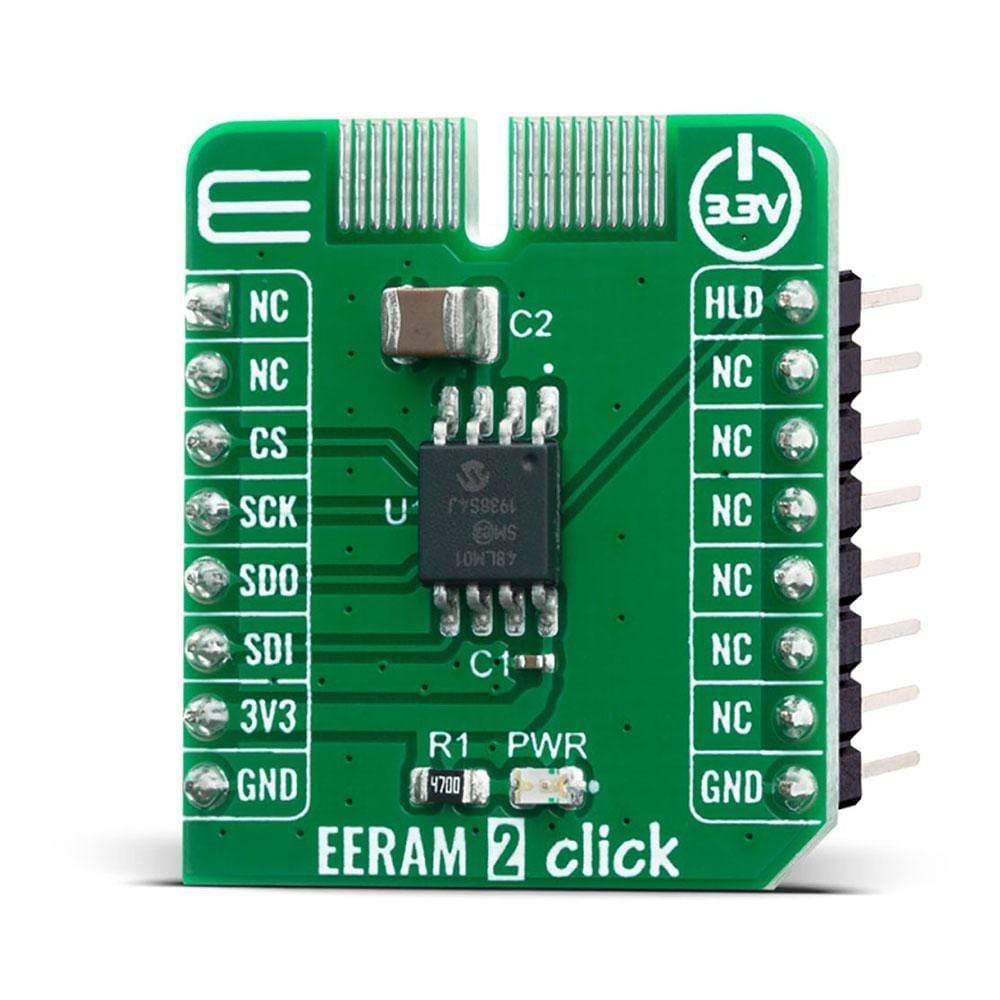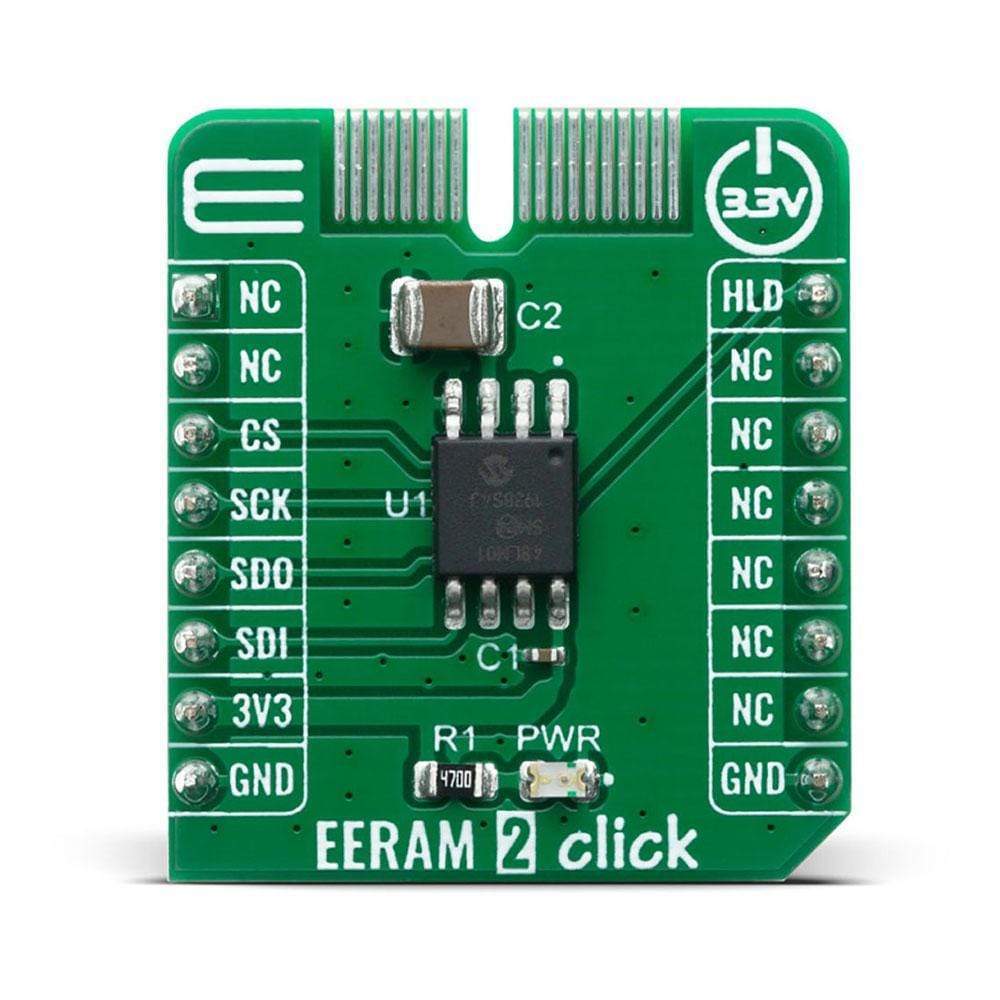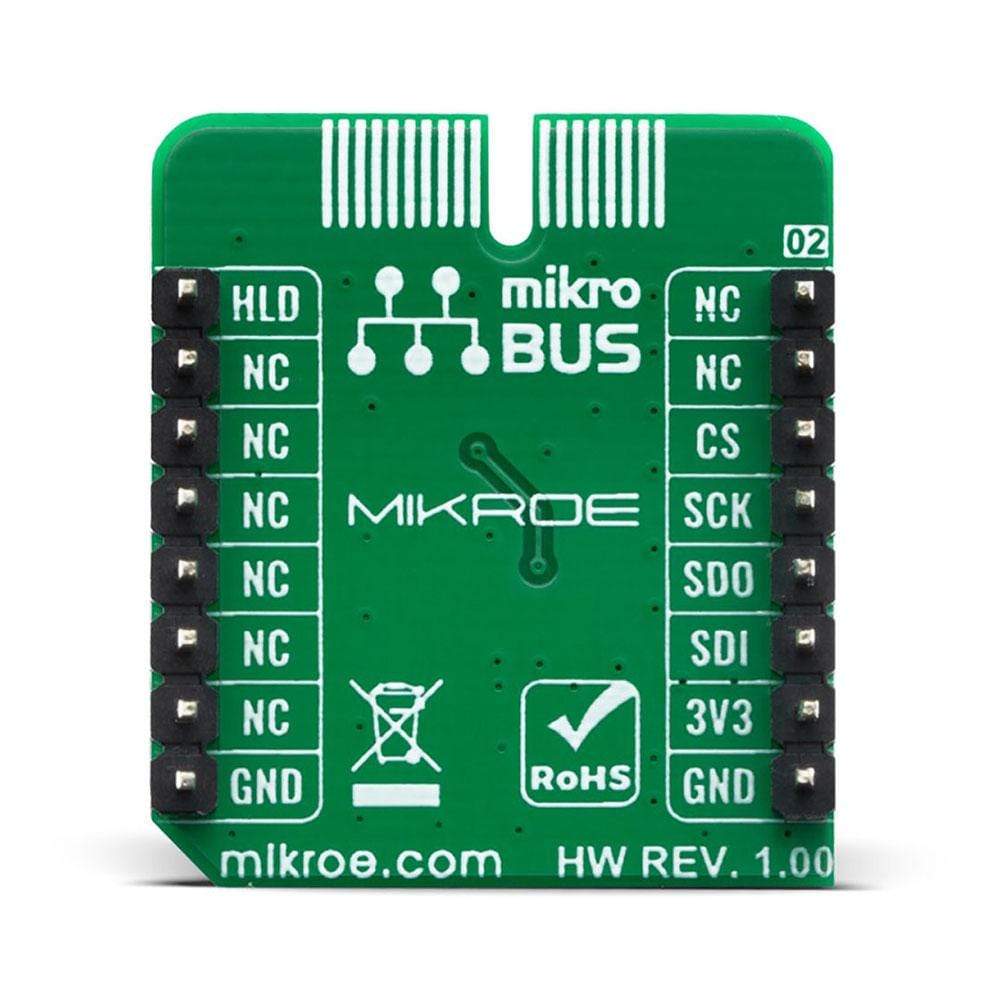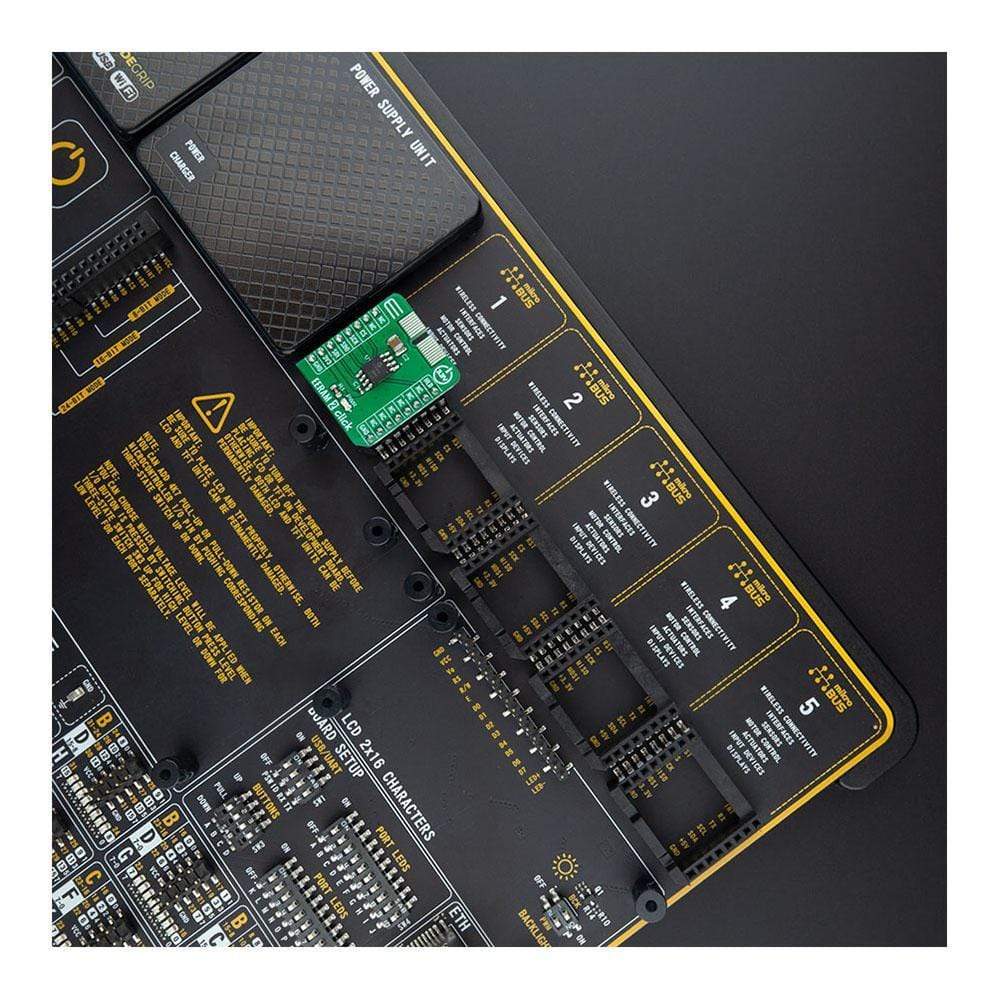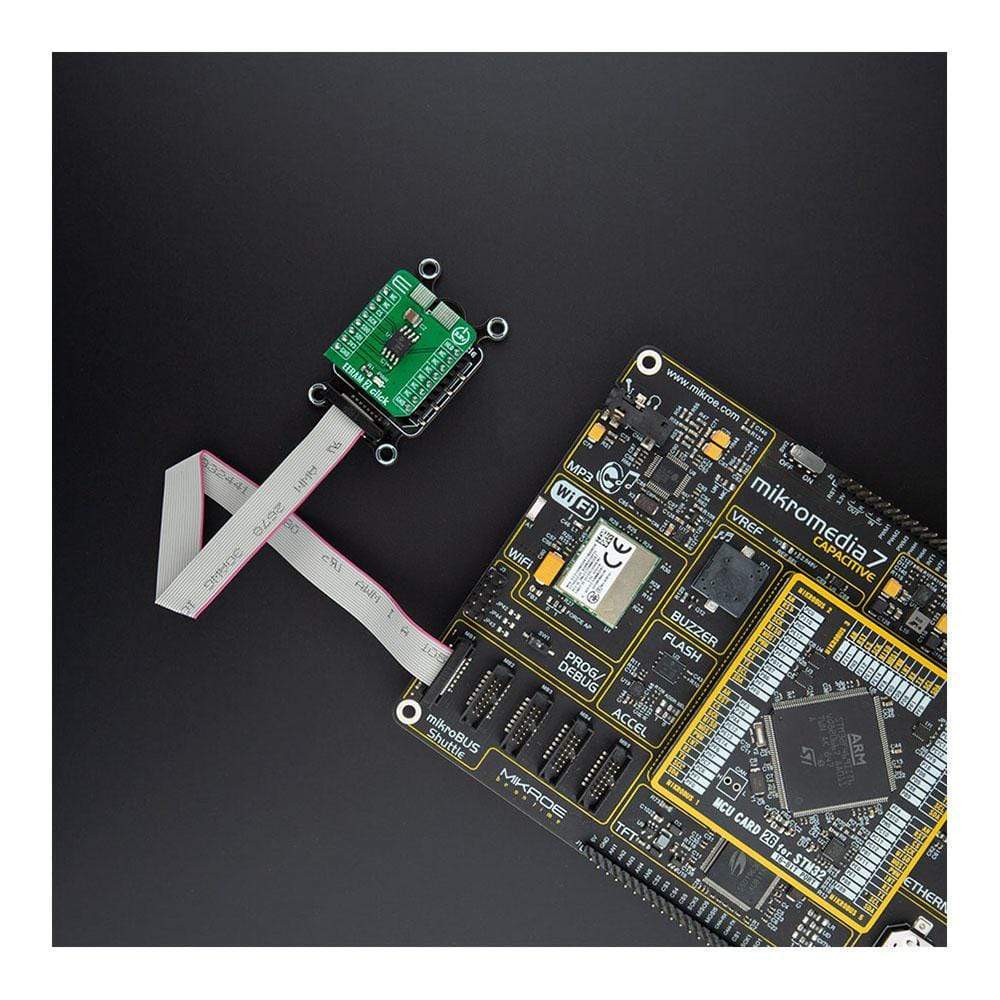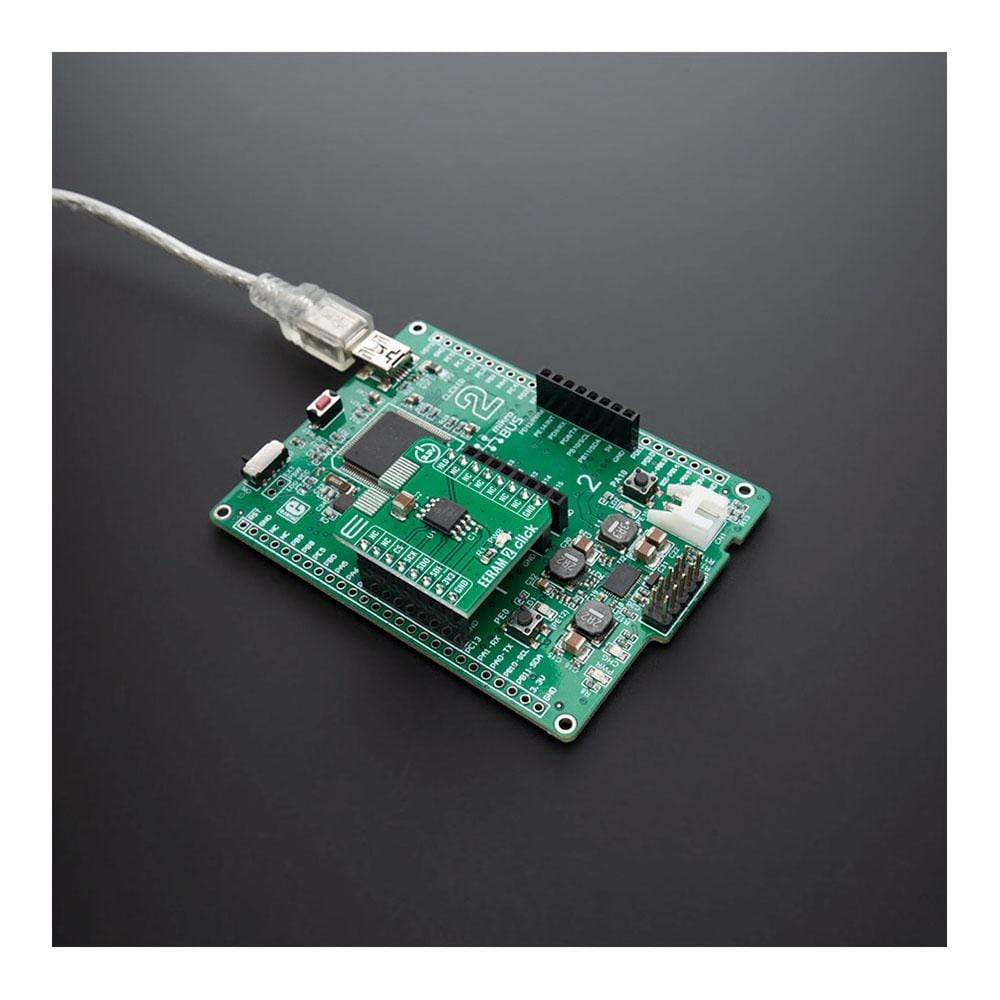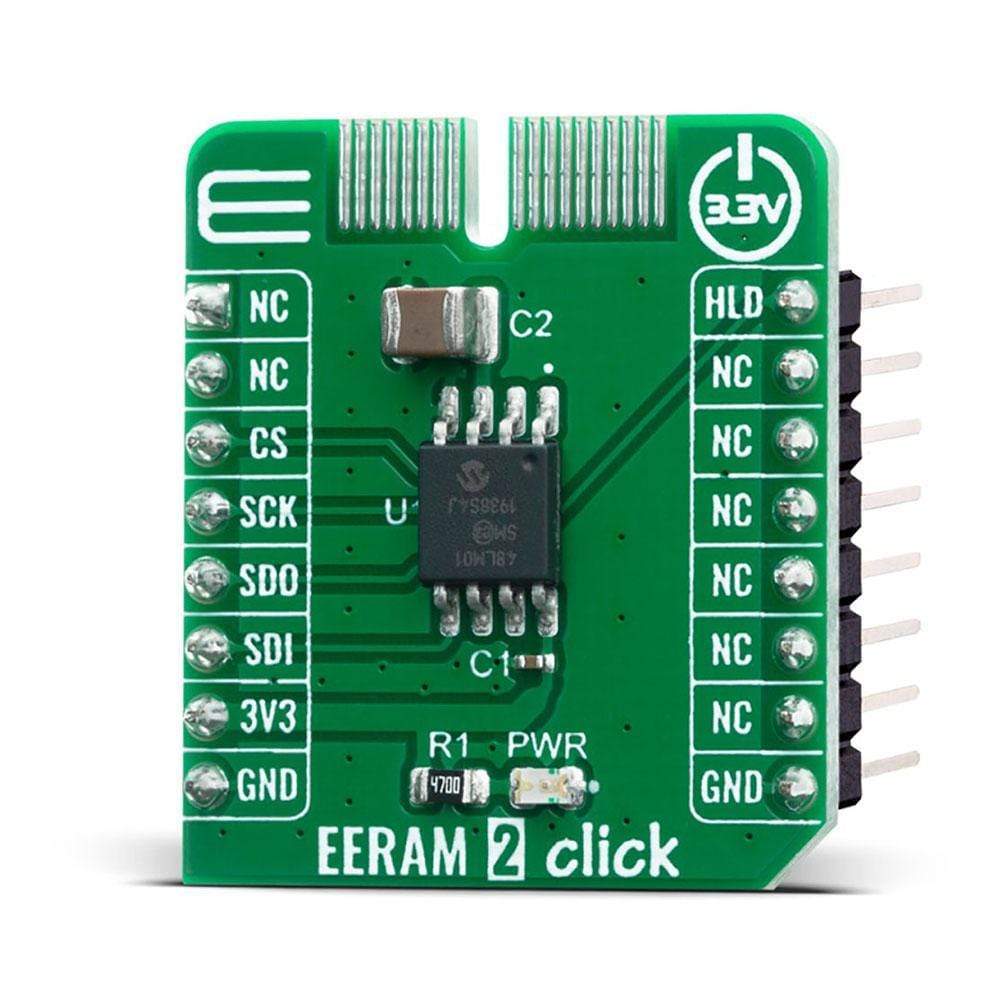

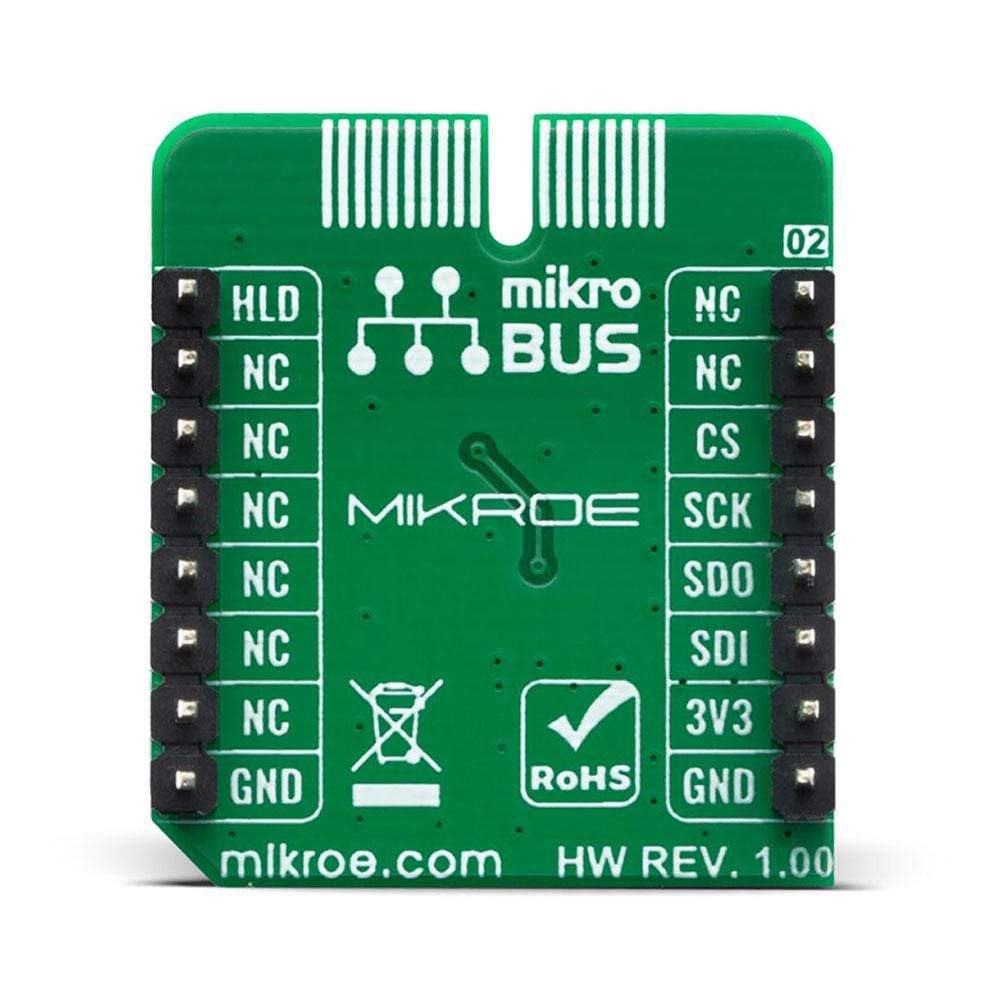
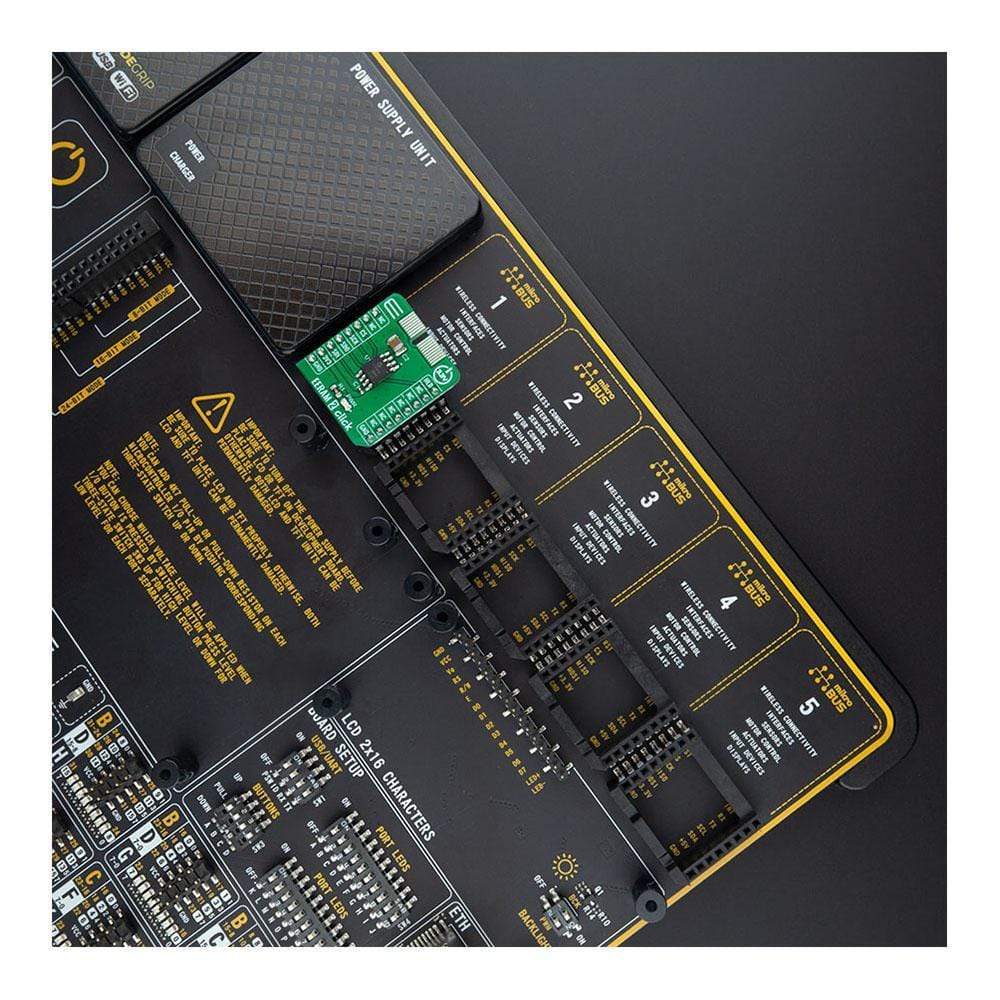
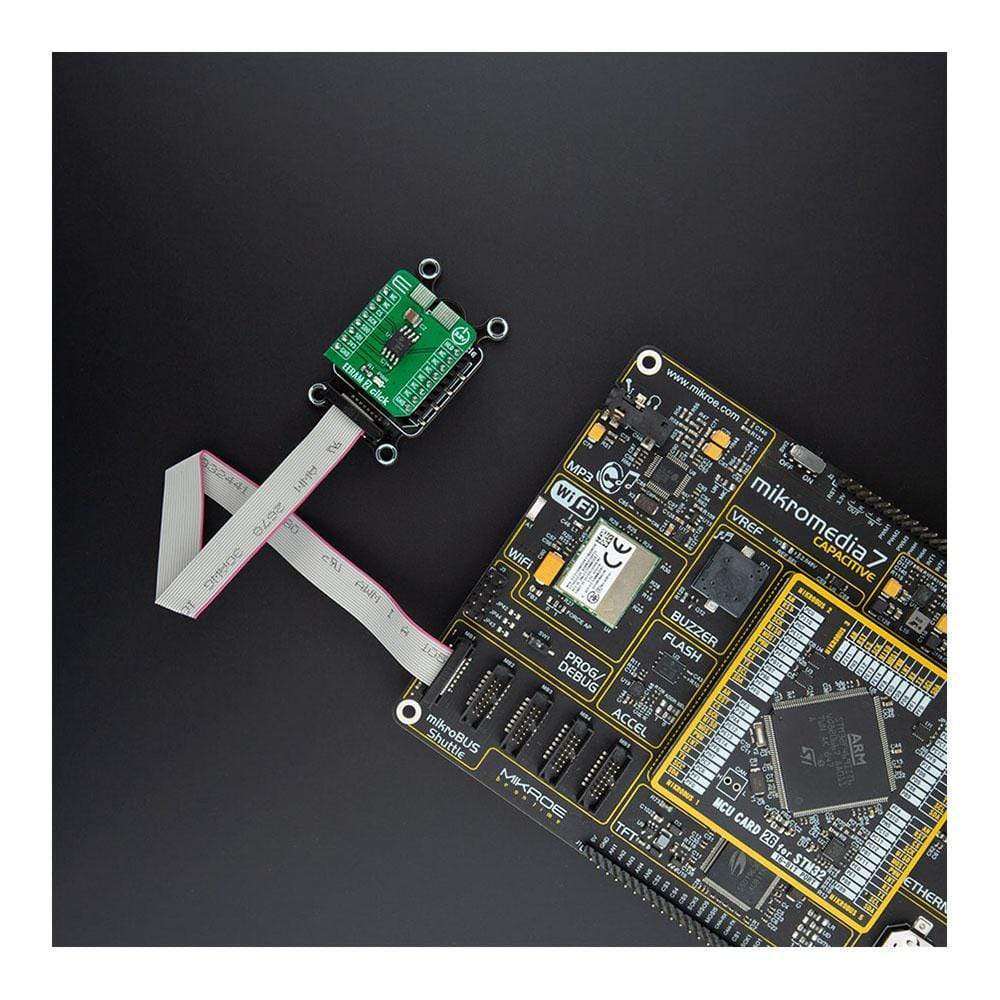

Overview
The EERAM 2 Click Board™ is a standalone serial SRAM memory that includes shadow non-volatile backup. EERAM uses a small external capacitor to provide the energy needed to move the contents of the SRAM to the non-volatile cells when system power is lost. Unlike NVSRAM, no external battery is needed. EERAM offers unlimited SRAM read and write cycles and more than 100,000 backups to the non-volatile cells.
Since power loss events are typically random or unpredictable, EERAM works in applications that absolutely cannot lose the quickly changing SRAM data on any sudden power loss. It provides designers of a data logging/black box or monitoring systems with a safe and accurate way to safely, reliably and automatically store the last data bytes prior to the power loss event. The Vcc is monitored inside the IC and can automatically handle the data movement between the SRAM and the non-volatile memory on any power disruption.
Downloads
Das EERAM 2 Click Board™ ist ein eigenständiger serieller SRAM-Speicher mit nichtflüchtiger Schattensicherung. EERAM verwendet einen kleinen externen Kondensator, um die Energie bereitzustellen, die zum Verschieben des Inhalts des SRAM in die nichtflüchtigen Zellen erforderlich ist, wenn die Systemstromversorgung unterbrochen wird. Im Gegensatz zu NVSRAM wird keine externe Batterie benötigt. EERAM bietet unbegrenzte SRAM-Lese- und Schreibzyklen und mehr als 100.000 Sicherungen in den nichtflüchtigen Zellen.
Da Stromausfälle typischerweise zufällig oder unvorhersehbar sind, funktioniert EERAM in Anwendungen, bei denen die sich schnell ändernden SRAM-Daten bei einem plötzlichen Stromausfall auf keinen Fall verloren gehen können. Es bietet Entwicklern von Datenprotokollierungs-/Blackbox- oder Überwachungssystemen eine sichere und genaue Möglichkeit, die letzten Datenbytes vor dem Stromausfallereignis sicher, zuverlässig und automatisch zu speichern. Der Vcc wird im IC überwacht und kann die Datenbewegung zwischen dem SRAM und dem nichtflüchtigen Speicher bei jeder Stromunterbrechung automatisch handhaben.
| General Information | |
|---|---|
Part Number (SKU) |
MIKROE-4129
|
Manufacturer |
|
| Physical and Mechanical | |
Weight |
0.017 kg
|
| Other | |
Country of Origin |
|
HS Code Customs Tariff code
|
|
EAN |
8606018717743
|
Warranty |
|
Frequently Asked Questions
Have a Question?
Be the first to ask a question about this.

